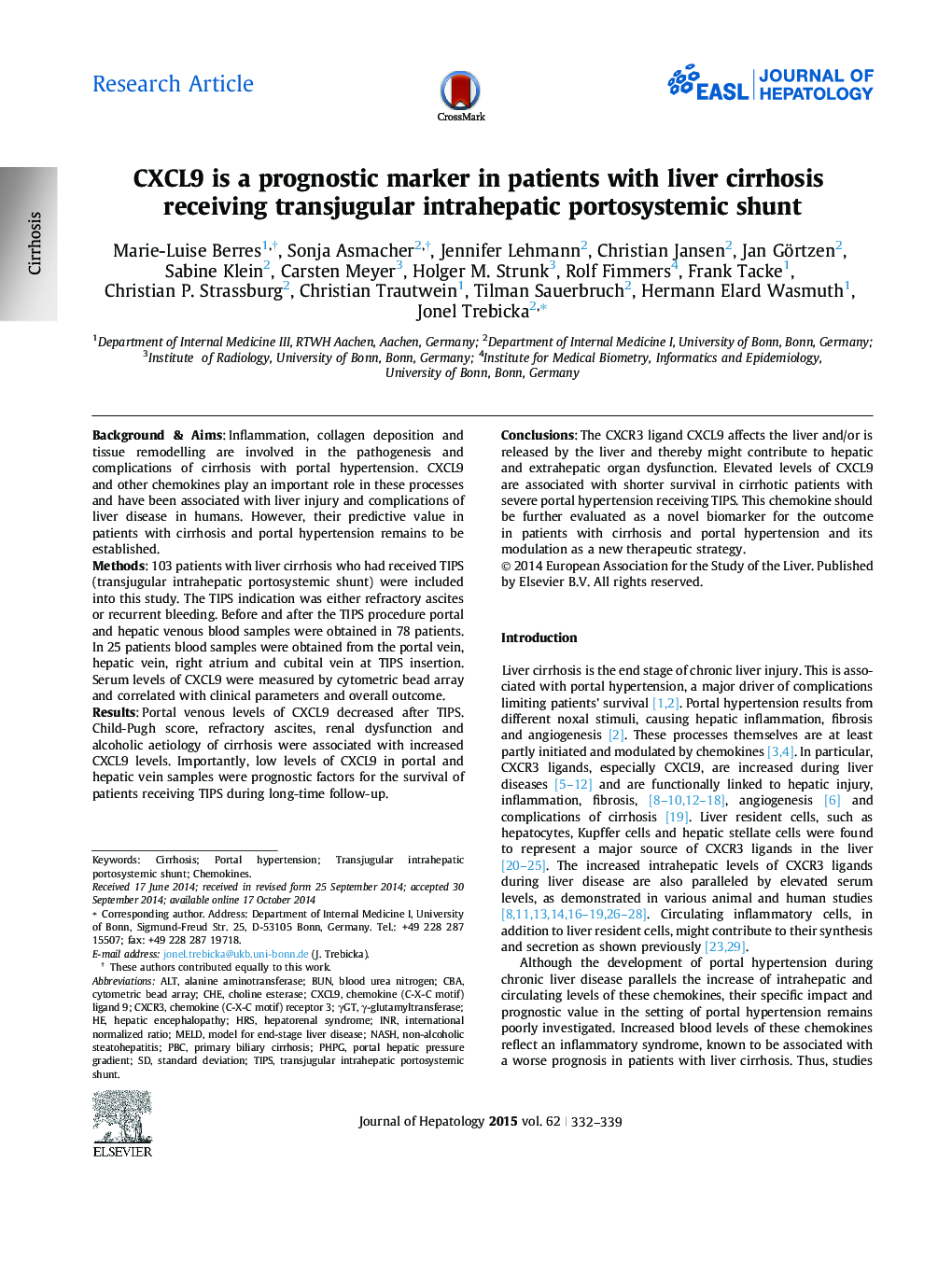| کد مقاله | کد نشریه | سال انتشار | مقاله انگلیسی | نسخه تمام متن |
|---|---|---|---|---|
| 6102584 | 1211118 | 2015 | 8 صفحه PDF | دانلود رایگان |

Background & AimsInflammation, collagen deposition and tissue remodelling are involved in the pathogenesis and complications of cirrhosis with portal hypertension. CXCL9 and other chemokines play an important role in these processes and have been associated with liver injury and complications of liver disease in humans. However, their predictive value in patients with cirrhosis and portal hypertension remains to be established.Methods103 patients with liver cirrhosis who had received TIPS (transjugular intrahepatic portosystemic shunt) were included into this study. The TIPS indication was either refractory ascites or recurrent bleeding. Before and after the TIPS procedure portal and hepatic venous blood samples were obtained in 78 patients. In 25 patients blood samples were obtained from the portal vein, hepatic vein, right atrium and cubital vein at TIPS insertion. Serum levels of CXCL9 were measured by cytometric bead array and correlated with clinical parameters and overall outcome.ResultsPortal venous levels of CXCL9 decreased after TIPS. Child-Pugh score, refractory ascites, renal dysfunction and alcoholic aetiology of cirrhosis were associated with increased CXCL9 levels. Importantly, low levels of CXCL9 in portal and hepatic vein samples were prognostic factors for the survival of patients receiving TIPS during long-time follow-up.ConclusionsThe CXCR3 ligand CXCL9 affects the liver and/or is released by the liver and thereby might contribute to hepatic and extrahepatic organ dysfunction. Elevated levels of CXCL9 are associated with shorter survival in cirrhotic patients with severe portal hypertension receiving TIPS. This chemokine should be further evaluated as a novel biomarker for the outcome in patients with cirrhosis and portal hypertension and its modulation as a new therapeutic strategy.
123
Journal: Journal of Hepatology - Volume 62, Issue 2, February 2015, Pages 332-339